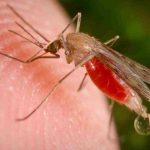With the Philippines having the fastest rising number of HIV cases in the world, many have become more aware of how rampant the sickness may now be. It’s important to know if one has already been infected with the human immunodeficiency virus (HIV).
Early HIV symptoms generally arise within one to two months of being infected, although according to the U.S. Department of Health and Human Services, they can arrive as early as two weeks after exposure, and as late as three months post-infection. However, some people experience no early symptoms after they have been infected with HIV.
Primary HIV infection is followed by a chronic or latent phase, during which time the virus becomes less active though it is still in the body. This period of latency can last a decade or longer. Many people show no symptoms of HIV infection during this entire 10-year period. However, once HIV becomes AIDS, symptoms such as nausea, vomiting, fatigue, and fever may become apparent.
Here are some HIV symptoms which may help in detecting the virus at the earliest stage possible:
1) Fever and flu
Within a month or 2 of contracting the virus, 40% to 90% of those infected may experience flu-like symptoms known as acute retroviral syndrome (ARS).
Initially, most people who contract the illness experience common flu-like symptoms that may be hard to distinguish from a more general flu or a gastrointestinal or respiratory infection. ARS can be a mild fever reaching to about 120 F°.
2) Muscle and joint aches and pains
Most fevers include pain in the joints and muscles and swollen lymph glands. Lymph nodes are part of the body’s immune system and tend to get inflamed when there’s an infection. Many of them are located in the armpits, groin, and neck.
3) Sore throat and headache
As with other symptoms, sore throat and headache can often be recognized as ARS but only in context. Sore throat and headaches are relatively common conditions associated with the common flu.
4) Skin rashes
Skin rashes can occur early or late in the course of HIV/AIDS.
For some, these may appear as boil-like, itchy, and pink blemishes. Rashes can normally be treated with creams or ointments or may disappear on their own in a matter of days. Testing is recommended if the rashes are not easily treated.
5) Nausea, vomiting, and diarrhea
Anywhere from 30% to 60% of people have short-term nausea, vomiting, or diarrhea in the early stages of HIV. These symptoms can also appear as a result of antiretroviral therapy and later in the infection, usually as the result of an opportunistic infection.
While diarrhea may simply be caused by an organism not usually seen in people with healthy immune systems, diarrhea that is unremitting and not responding at all to usual therapy might be an indication.
6) Weight loss
Weight loss is an indication of the depletion of the immune system, which is triggered by the virus. Although this may be associated with diarrhea, according to the U.S. Department of Health and Human Services, a person is considered to have AIDS wasting syndrome if they lose 10% or more of their body weight and have had diarrhea or weakness and fever for more than 30 days.
7) Dry cough
Dry cough may simply be dismissed as allergies and could be treated with medication, antibiotics, and inhalers. Dry coughs as manifestations of HIV, however, are coughs that may go on for weeks that do not seem to resolve with any medications or remedies.
8) Pneumonia
Also known as “AIDS pneumonia,” this respiratory illness associated with HIV is considered an opportunistic infection. An opportunistic infection is an infection caused by bacterial, viral, fungal, or protozoan pathogens that take advantage of a host with a weakened immune system. Other opportunistic infections include toxoplasmosis, a parasitic infection that affects the brain; a type of herpes virus called cytomegalovirus; and yeast infections such as thrush.
9) Night sweats
About half of HIV-infected people experience night sweats in the early stages of HIV infection. Night sweats are episodes of nighttime sweating that soak nightclothes or beddings.
10) Fungal infections
Fungal infections are another sign of late HIV infection, as the patient’s immune system has greatly been weakened. This includes nail changes such as clubbing (thickening and curving of the nails), splitting of the nails, or discoloration (black or brown lines going either vertically or horizontally).
Another fungal infection that’s common in later stages is thrush, a mouth infection caused by Candida, a type of yeast.
Candida is a very common fungus that causes yeast infections in women. These tend to appear in the mouth or esophagus, making it difficult to swallow.
11) Confusion or difficulty concentrating
Cognitive problems could be a sign of HIV-related dementia, which usually occurs late in the course of the disease. In addition, AIDS-related dementia might also involve memory problems and behavioral issues such as anger or irritability.
In a positive perspective, having these symptoms do not automatically mean one has contracted the virus. However, the mere fact one is entertaining that thought of having HIV should be a tell-tale sign to get tested. Though it can be nerve-racking, it’s important to get tested right away.
No visible symptoms during the early stages of HIV do not mean one is safe. An HIV-infected person is still contagious and can easily infect others with the virus through an exchange of body fluids.
Be smart, stay safe, and protect others. Get tested.



